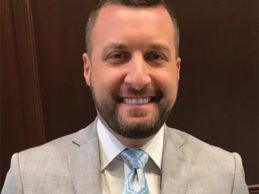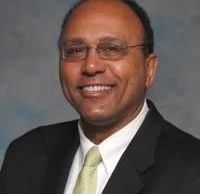A Clinically Integrated Network (CIN) strategy that leverages eConsult technology can help physicians and health systems deliver better care at a lower cost.
Physicians increasingly face pressure to deliver high-quality care efficiently while continuing to grow and sustain their practices. But lowering costs while sustaining growth often means giving up autonomy. The percentage of solo physicians in the U.S. fell to 17% in 2014, compared with 41% in 1983. Additionally, hospital ownership of
Read More
4 Ways Healthcare Leaders Can Use Data & Analytics to Prevent, Predict and Prepare for a Pandemic
COVID-19 has put a laser focus on how data and analytics are powerful tools for healthcare leaders to predict, prepare, and respond in a proactive and coordinated manner to a global health crisis. Throughout the pandemic, data has been used to document the spread of the virus, project the curve, and more.
Responses and actions to mitigate viral spread hinge on real-time data collection, governance, and analysis for instant decision making. The exchange of reliable, real-time data between
Read More
Black Lives Matter: Health IT Industry, Where Are You?
All lives truly matter. However, the world does not exist in a vacuum void of institutional racism, subconscious, and implicit bias. As a result, every life within America is not valued the same, as is evident by the recent George Floyd murder. When all lives are not treated with the same opportunities and respect, whether in matters of criminal justice, employment, housing, education, health, and healthcare evidence shows the result is that only some lives actually matter. One cannot change the
Read More
Predictive Analytics: Preventing the Aftershocks from COVID-19
Right now, the world’s attention is focused on COVID-19. This is most appropriate as it has hit the world like a global earthquake, disrupting lives on an unprecedented scale.
However, there will come a day when the immediate danger has passed. At that point, it’s very likely that the healthcare system will begin to feel the significant aftershocks of COVID-19 in the form of neglected chronic condition management throughout the pandemic.
The Centers for Disease Control
Read More
How Social Determinants of Health Will Impact the Future of Benefit Coverages
Do you have access to healthy foods, transportation to a doctor, high-speed internet for telemed appointments, or a roof over your head? These are assumptions that most of us take for granted, and are not the questions that insurers usually take into consideration. But, as they look to increase member outcomes and foster long-term customer loyalty, considering the changing needs of many consumers in the face of today’s current affairs, it’s time they did.
In fact, forward-looking health plans
Read More
M&A Analysis: Mednax to Sell its Radiology and Teleradiology Business
Earlier this month saw Mednax announce significant plans to transform its business. Mednax intends to:
- Sell its Mednax Radiology Solutions business, which includes its radiology groups and the teleradiology market leader Virtual Radiologic (vRad).
- Reposition itself as a dedicated pediatrics and obstetrics business, including a return to its original company name, Pediatrix Medical Group.
Mednax made its entrance into the radiology business following the $500m acquisition of vRad in
Read More
Cardiology Improving Safety, Technology and Gender Equality
Women currently comprise more than half of all students enrolled in medical school, but gender inequality continues to mar some areas of medicine. In our field of interventional cardiology, men outnumbered women 95 to 5 as recently as 2019, but new technology, shifting attitudes and strategic recruiting have led to an influx of females in interventional cardiology that will alter the evolution of a field historically stunted by traditionalism.
Cardiovascular disease is the most common cause
Read More
5 Reasons Why Providers Need Electronic Support for Glycemic Management
It’s no secret hyperglycemia and hypoglycemia are associated with adverse outcomes in hospitalized patients. We’ve known for many years that hyperglycemia is widespread in the hospital, causes immune dysfunction, higher rates of infection, a longer length of hospital stay, complications, and even death.
Insulin has been the most effective therapy for hyperglycemia since it was first created almost 100 years ago, but it can also be dangerous if not managed properly. In fact, nearly 50% of all
Read More
The Digital Front Door: The Gateway to Empathetic Patient Navigation
The healthcare experience can often feel lonely. Lengthy surveys, unnecessary appointments, long waiting times and tedious, paperwork all contribute to this potentially confusing and isolating patient experience. Now, amidst a global health crisis, any barriers or obstacles to care could be detrimental beyond loneliness and could be fatal. These impeding components should not define a patient’s journey. Fair access to quality care, accurate record-keeping, and empathy should be at the core of
Read More
What Therapists Need to Know about Telehealth Technology
Thousands of therapists who never intended to engage in telehealth are now doing exactly that – they are providing services to clients in lockdown using video-enabled platforms. While the technological landscape for psychotherapy is dramatically improved from even a few years ago, therapists rapidly transitioning to online services need to hold a few things in mind.
It’s not the same as in-person therapy
While online psychotherapy has been shown to be just as effective as in-person care,
Read More










